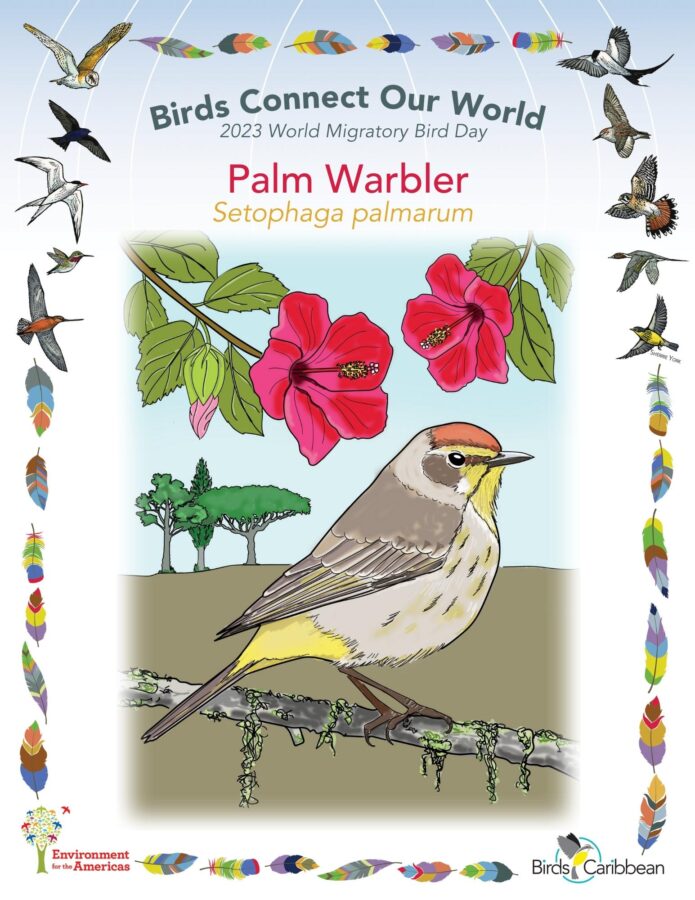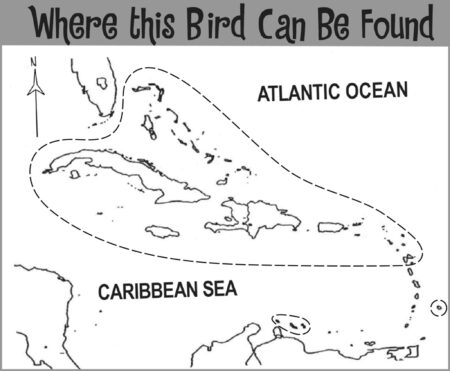Celebrate World Migratory Bird Day (WMBD) with us in 2023! This year’s theme is “Water: Sustaining Bird Life”. Have fun learning about a new migratory bird every day. We have coloring pages, puzzles, activities, and more. Download for free and enjoy nature with your family at home.
Migratory Bird of the Day: Palm Warbler
Wood-warblers are challenging birds for most amateur birders to ID—they are small, fast-moving, and have plumage patterns that overlap across species, age and sex. However, if you are birding in open areas, and find a sparrow-sized bird, feeding on the ground, with distinctive and bright yellow undertail-coverts, wagging its tail feathers like it’s a matter of life or death—you have found a Palm Warbler!
There are two subspecies of Palm Warbler which are easily distinguished. Whilst both have grayish to olive brown upperparts, if you meet a Yellow Palm Warbler, you’ll notice that—besides their undertail coverts—their throat, breast and belly are also stunningly yellow. On the other hand, only the undertail-coverts, and sometimes the throat of the Western Palm Warbler, is vividly yellow—which contrasts with their pale breast and belly. You can also look out for faint brown streaking on the breast and flanks, and a chestnut cap in breeding plumage. Both sexes are similar, making them one of the few warbler species that are not sexually dimorphic.
Palm Warblers feed almost exclusively on the ground, searching for insects like grasshoppers, beetles, butterflies and mosquitoes during breeding season. Seeds, berries and nectar are added to their diet during the non-breeding season.
As a migratory bird, the name Palm Warbler reflects the fact that the species was first described from a specimen wintering in the Caribbean. The Palm Warbler’s non-breeding range also includes the southeast and Gulf Coast of the United States. Interestingly, this bird has a fondness for the bog and coniferous forests of Canada and the northern United States. This makes it one of the northernmost breeding species of all the New World warblers, surpassed only by its close relative, the Blackpoll Warbler.
Given its remote breeding habitat, and how difficult it is to find the nests of this bird, much remains unknown about this part of its life cycle. Peak nest building occurs around mid-May. Nests are usually constructed at the base of coniferous trees, between 5 to 30 cm above the ground. Females lay two to four eggs and take the lead in incubating the eggs and feeding nestlings, with some support provided by their mates.
Palm Warblers prefer relatively open habitats with scattered trees and dense shrubs of 1–2 m tall on both their breeding and wintering grounds. This charismatic warbler can also be found in a variety of woodland, second-growth, and thicket habitats; on the ground in savannas, open fields and lawns; and in mangroves.
Palm Warblers are not endangered, but like other nocturnal migrants, they face multiple threats from light pollution and building strikes. There is a lot we can do on a daily basis to protect this cute tail-wagging warbler: turn off the lights at night during fall and spring months, advocate for bird-friendly windows, keep your pets indoors, and provide and protect clean water sources along their migration paths. Learn more about this species, including its range, photos, and calls here.
Thanks to Daniela Ventura for the text and Christine Elder for the lovely illustration!
Color in the Palm Warbler
Download the Migratory Birds of the Day Coloring Page! Use the picture above and the photos on this page as your guide, or look up pictures of the bird online or in a bird field guide if you have one. Share your colored-in page with us by posting it online and tagging us @BirdsCaribbean #WMBD2023Carib
Listen to the calls of the Palm Warbler
Palm Warblers have a thin “seep” call, which can be heard during the non-breeding season.
Puzzles of the Day
Click on the images below to do the puzzle. You can make the puzzle as easy or as hard as you like—for example, 6, 8, or 12 pieces for young children, all the way up to 1,024 pieces for those that are up for a challenge!
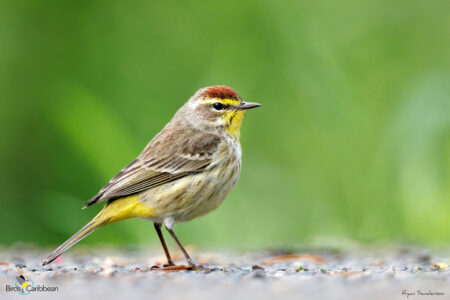
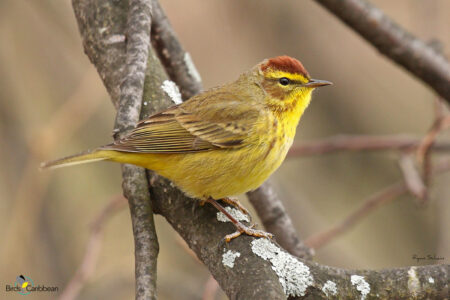
Activity of the Day
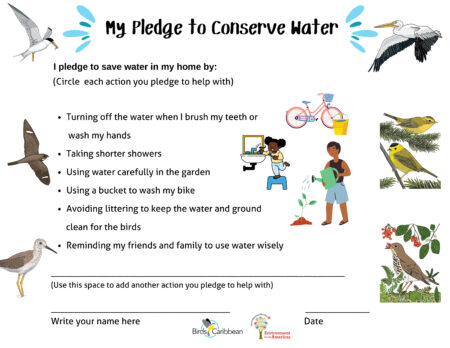 FOR KIDS: We hope that you have been enjoying learning all about migratory birds in the Caribbean! Don’t forget that this year our theme is “Water: Sustaining Bird Life”. Many of the birds we have featured this year are under pressure, often from human activities. This means that our special migratory birds, and many of the other beautiful birds that live in the Caribbean, need your help.
FOR KIDS: We hope that you have been enjoying learning all about migratory birds in the Caribbean! Don’t forget that this year our theme is “Water: Sustaining Bird Life”. Many of the birds we have featured this year are under pressure, often from human activities. This means that our special migratory birds, and many of the other beautiful birds that live in the Caribbean, need your help.
All birds need water to survive so you can help by carrying out the actions in our “Pledge to Conserve Water.” You can download and print our water pledge here. Sign your name and get started helping our birds by following some of the simple water-saving actions listed in the pledge. You can hang or pin it up somewhere at home to remind you to keep saving water and helping birds and wildlife. And don’t forget to share this pledge with your family and friends!
FOR KIDS AND ADULTS: Enjoy this video of a Palm Warbler in the wild on its wintering grounds in Cuba!
Get some helpful for hints on how to identify warblers in the Caribbean: Warblers are among the most beautiful and entertaining Caribbean birds, but they can also be some of the most challenging birds to identify. Luckily naturalist, educator, and artist, Christine Elder, has some really helpful tips on what to look for as well as some amazing resources for you to use. Check out this blog post to find out more. Christine also created the beautiful artwork for our 2023 “Migratory Birds of the Day”!

